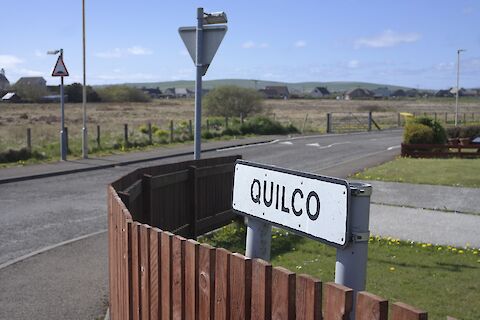Here you can find the resources we are developing for the journey. Many of these are linked to the smartphone app.
54 resources were found:
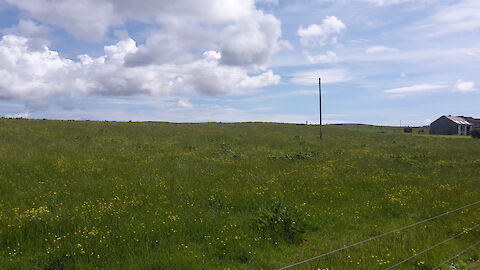
VIew of the Knowes of Conyar from the Old Drover's Track
A small artificial island in the Loch of Wasdale (in the parish of Firth), once reached by means of submerged stepping stones, is the site of a chapel. This chapel, for which no dedication survives, has no associated burial ground, which is unusual.
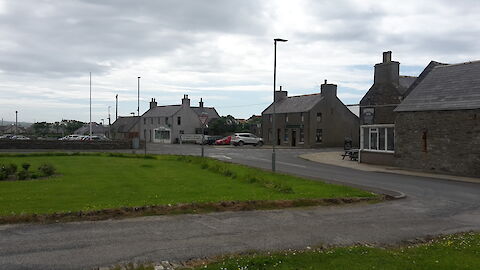
View of Dounby crossroads from the picnic tables opposite the Smithfield Hotel.
Audio recording of historical information about the Knowes of Conyar, also known as St Magnus's Resting Place.
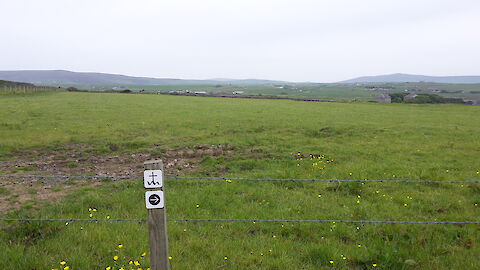
View from North Bigging towards Kingshouse
Audio recording of historical information about Kingshouse, Harray, where an unknown mound (visible to the southeast of North Bigging) is traditionally associated with a resting place of St Magnus.
There are two places in the south corner of Harray which have been suggested as resting places of Magnus: A mound called Howinawheel on the land of Winksetter and a stone at or near The Refuge. There is about a mile distance between these two places and the traditions for both rely on place-name evidence.
Poem located at the Harray Loch.
There are various traditions associated with the transportation of that Magnus’s shrine through the parish of Harray on the way from Birsay to Kirkwall.
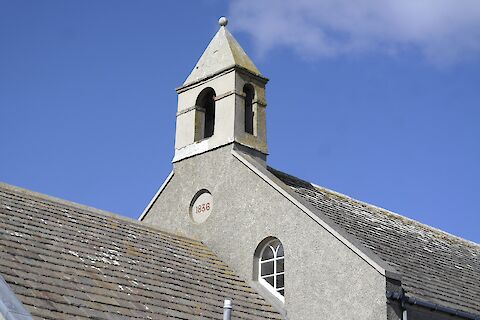
Photograph of St Michael's Church
The name Whilcoe, now Quilco and the name of a housing estate, referred at the end of the nineteenth century to a boundary stone marking the three parishes of Birsay, Harray and Sandwick.
The first Magnus resting place in Firth was thought to be a mound ‘somewhat to the west of Finstown with a standing stone on top’.
Reflection on the heart as we journey to the heart of the Mainland.
Audio recording of historical information about St Michael's Kirk in Harray.
Audio recording of historical information about Appiehouse as a possible resting point.
There is a rich Magnus tradition associated with an 8ft high standing stone on the top of Stoney Hill in Harray. This prehistoric stone, is the only remaining stone from a stone circle that once dominated the skyline.
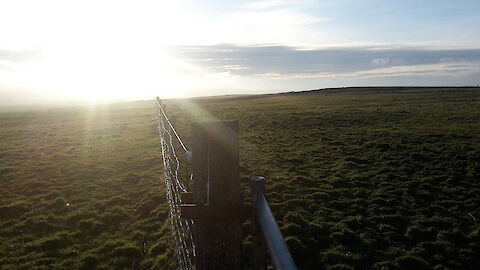
Above Kingshouse, looking West
Description of the route from Dounby to Finstown
Downloadable GPX file of Dounby to Finstown route for use with mapping applications, including Ordnance Survey.
Map of the route from Dounby to Finstown
The theme for this stage is Change – reflecting on the changing landscape and ways of life over the centuries as well as our own often conflicting attitudes to change as something both welcomed and feared.
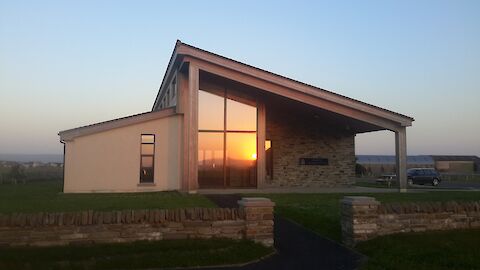
Sunset reflected in Milestone Community Church.
